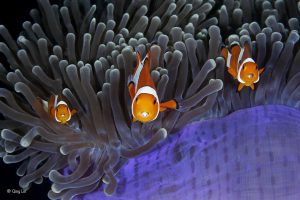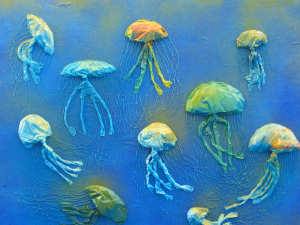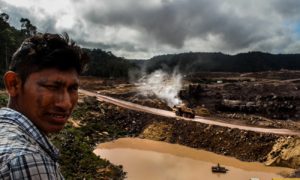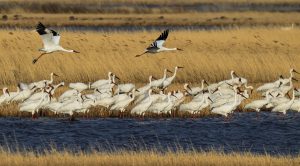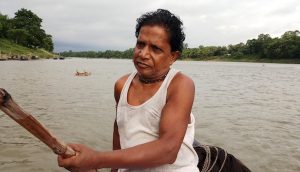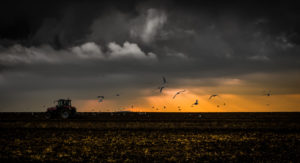The winners of the 2018 Wildlife Photographer of the Year competition were announced in London on October 16, with this year’s contest featuring several photographs of animals that are endangered or threatened by people.
Among the winning images is a pair of endangered golden snub-nosed monkeys native to China’s Qingling Mountains. Another shows crabeater seals on an ice floe in the Antarctic. The seals depend on sea ice and krill for survival, but sea ice in the region is expected to diminish as a result of climate change, and several countries are looking to develop krill fishing in the Southern Ocean.
Ian Owens, director of Science at the Natural History Museum and member of the judging panel hopes the winning images will “raise awareness for threatened species and ecosystems”.
Photographs from this year’s competition also highlight direct interactions between animals and people. In one image, a chained long-tailed macaque, trained to perform tricks for passers-by in Indonesia, is grimly forced to wear a clown mask. In another, a critically endangered Marsican brown bear can be seen crossing a road next to a village in Italy. The bears often raid bins and vegetable patches for food.
The 2018 winners were chosen from 45,000 entries from photographers across 95 countries, according to the museum. The competition was first held in 1965 and organised by BBC Wildlife Magazine (then called Animals). It was later developed by the Natural History Museum, which now runs the annual contest.
The exhibition will show at the National History Museum in London from October 19 to the summer of 2019.
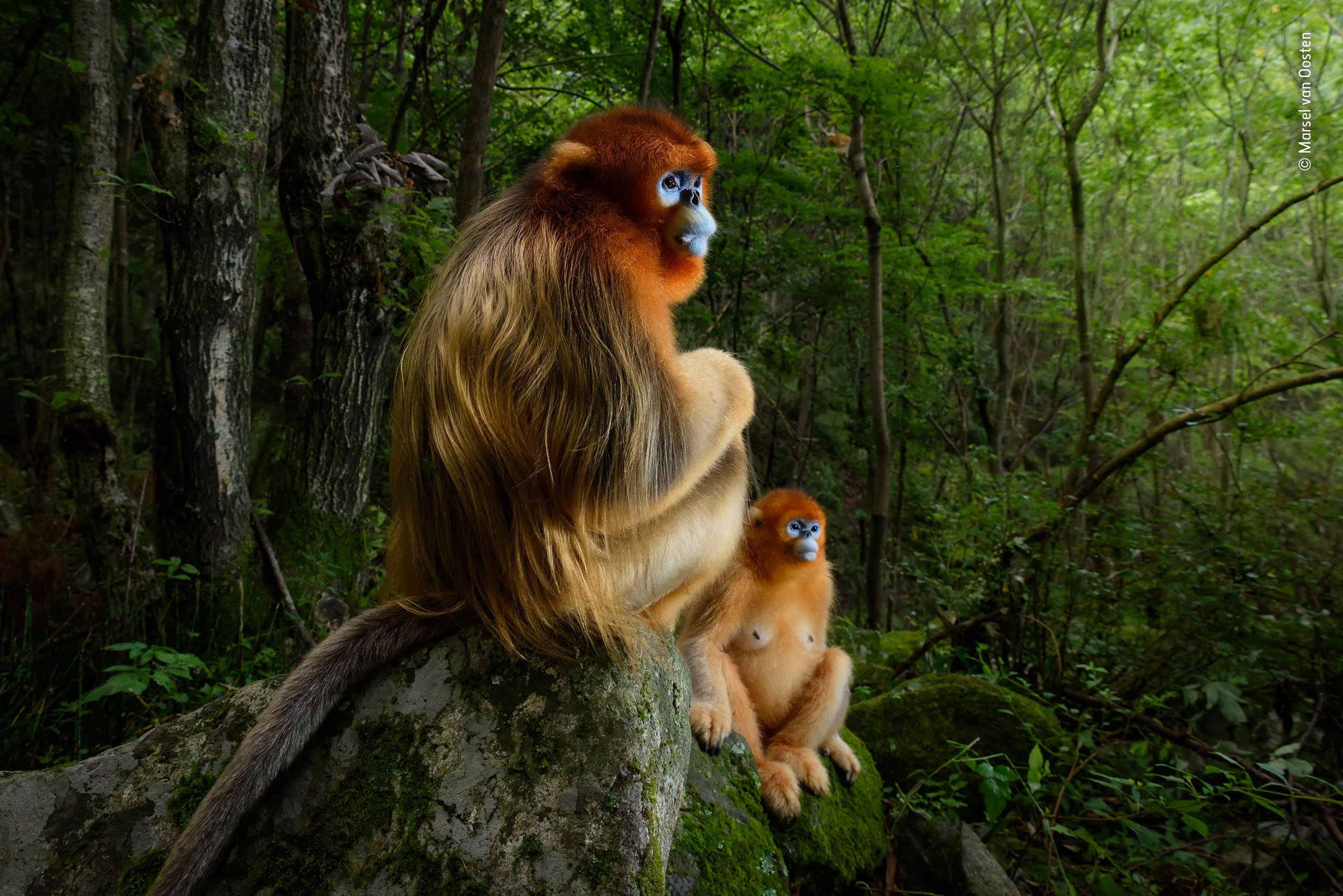
Grand Title Winner 2018, Animal Portraits
A male Qinling golden snub-nosed monkey rests briefly on a stone seat. He has been joined by a female from his small group. Both are watching intently as an altercation takes place down the valley between the lead males of two other groups in the 50-strong troop. It’s spring in the temperate forest of China’s Qinling Mountains, the only place where these endangered monkeys live. They spend most of the day foraging in the trees, eating a mix of leaves, buds, seeds, bark and lichen, depending on the season.
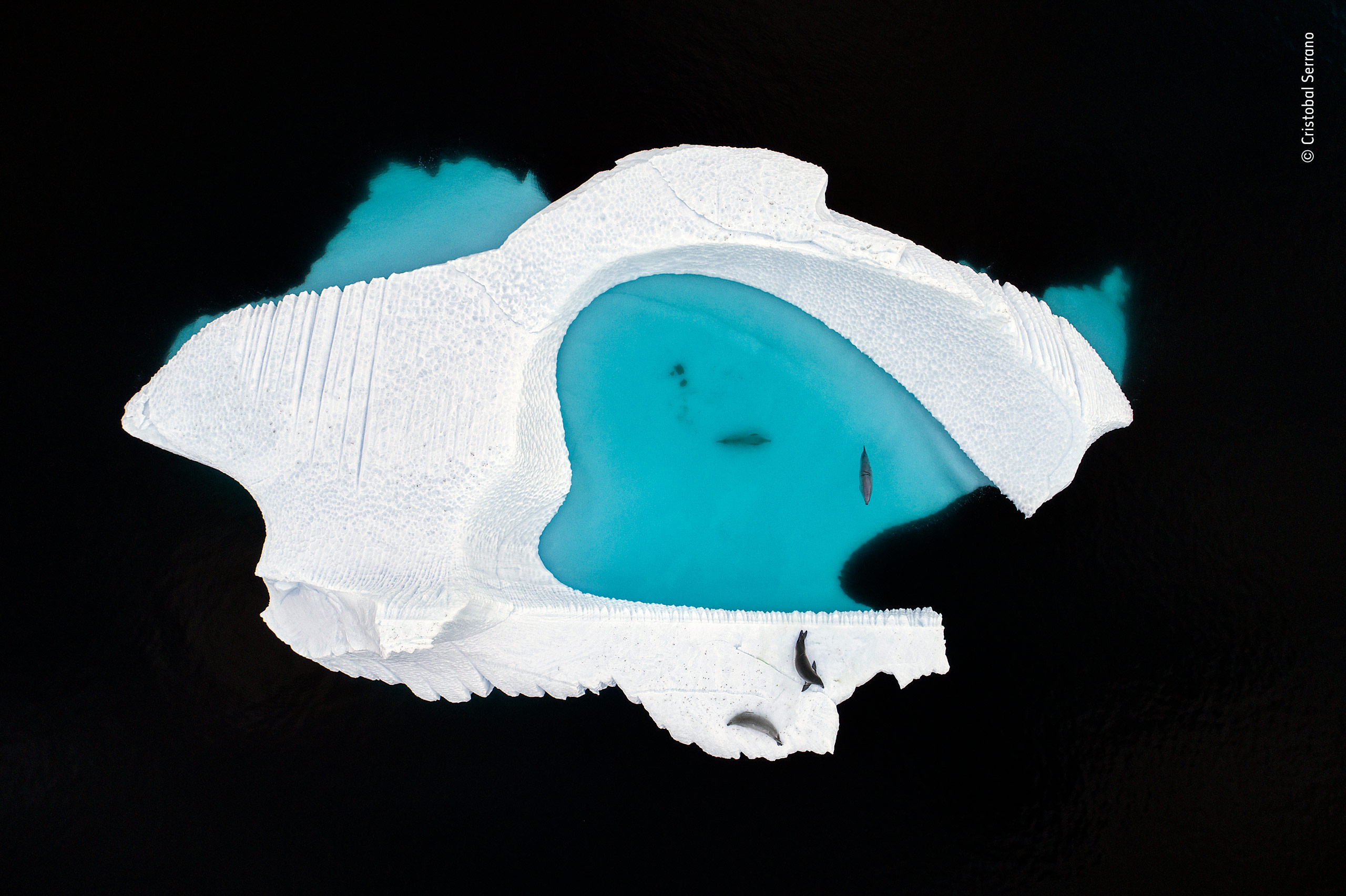
Winner 2018, Animals in their environment
The end of summer in the Antarctic and a small ice floe at the tip of the Antarctic Peninsula provides barely enough room for a group of crabeater seals to rest. The species are widespread in Antarctica but dependent on sea ice for resting, breeding, avoiding predators and accessing feeding areas. Despite their name, crabeaters feed almost exclusively on Antarctic krill, using their interlocking, finely lobed teeth to sieve the small crustacean from the water. Krill is also dependent on sea ice, which provides winter shelter and food (algae). So the decline in sea ice will have a knock-on effect on such specialist krill predators, as will overfishing of krill. For the moment, there is no evidence of a decline in their numbers, though counting crabeaters is very difficult.
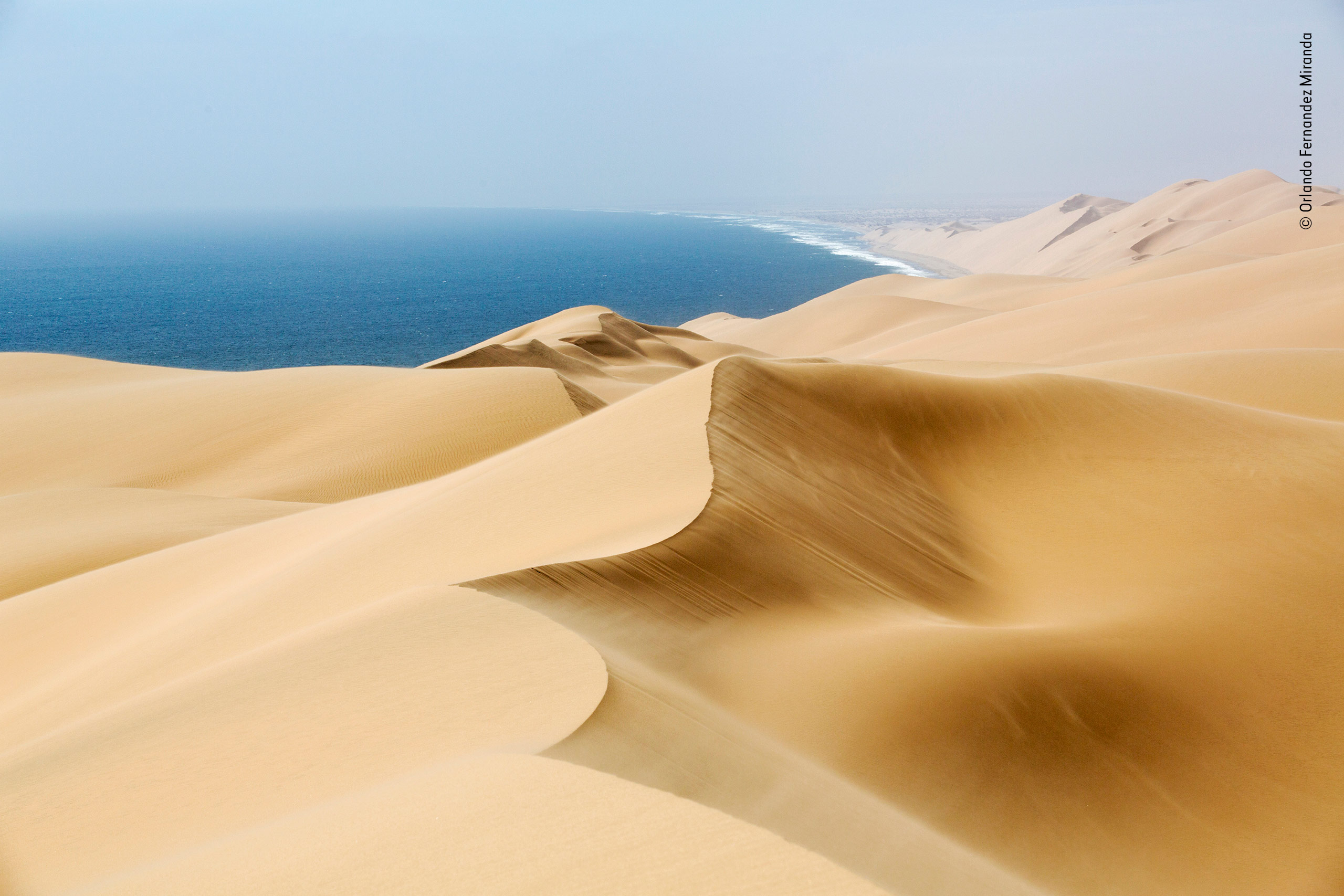
Winner 2018, Earth’s Environments
Standing at the top of a high dune on Namibia’s desert coastline, where mounds of wind-sculpted sand merge with crashing Atlantic waves, Orlando faced a trio of weather elements: a fierce northeasterly wind, warm rays of afternoon sunshine and a dense ocean fog obscuring his view along the remote and desolate Skeleton Coast. Such eclectic weather is not unusual in this coastal wilderness. It is the result of cool winds from the Benguela Current, which flows northwards from the Cape of Good Hope, mixing with the heat rising from the arid Namib Desert to give rise to thick fog that regularly envelopes the coast. As it spills inland, the moisture from this fog is the life-blood for plants and insects in the dry dunes.
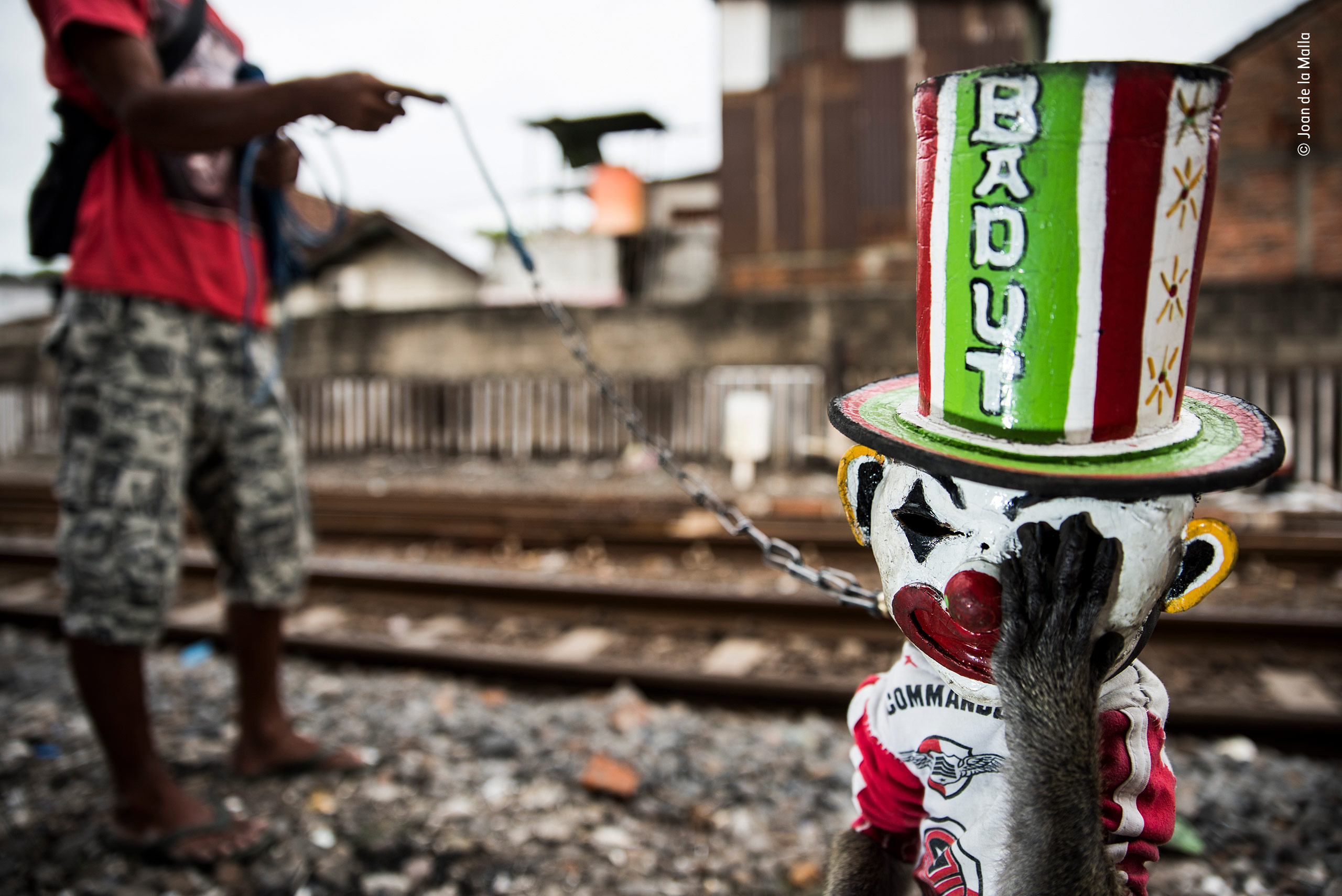
Winner 2018, Wildlife Photojournalism
Timbul, a young long-tailed macaque, instinctively puts his hand to his face to try to relieve the discomfort of the mask he has to wear. His owner is training him to stand upright so that he can add more stunts to his street‑show repertoire (the word Badut on the hat means clown). When he’s not training or performing, Timbul lives chained up in his owner’s yard next to a railway track in Surabaya, on the Indonesian island of Java.
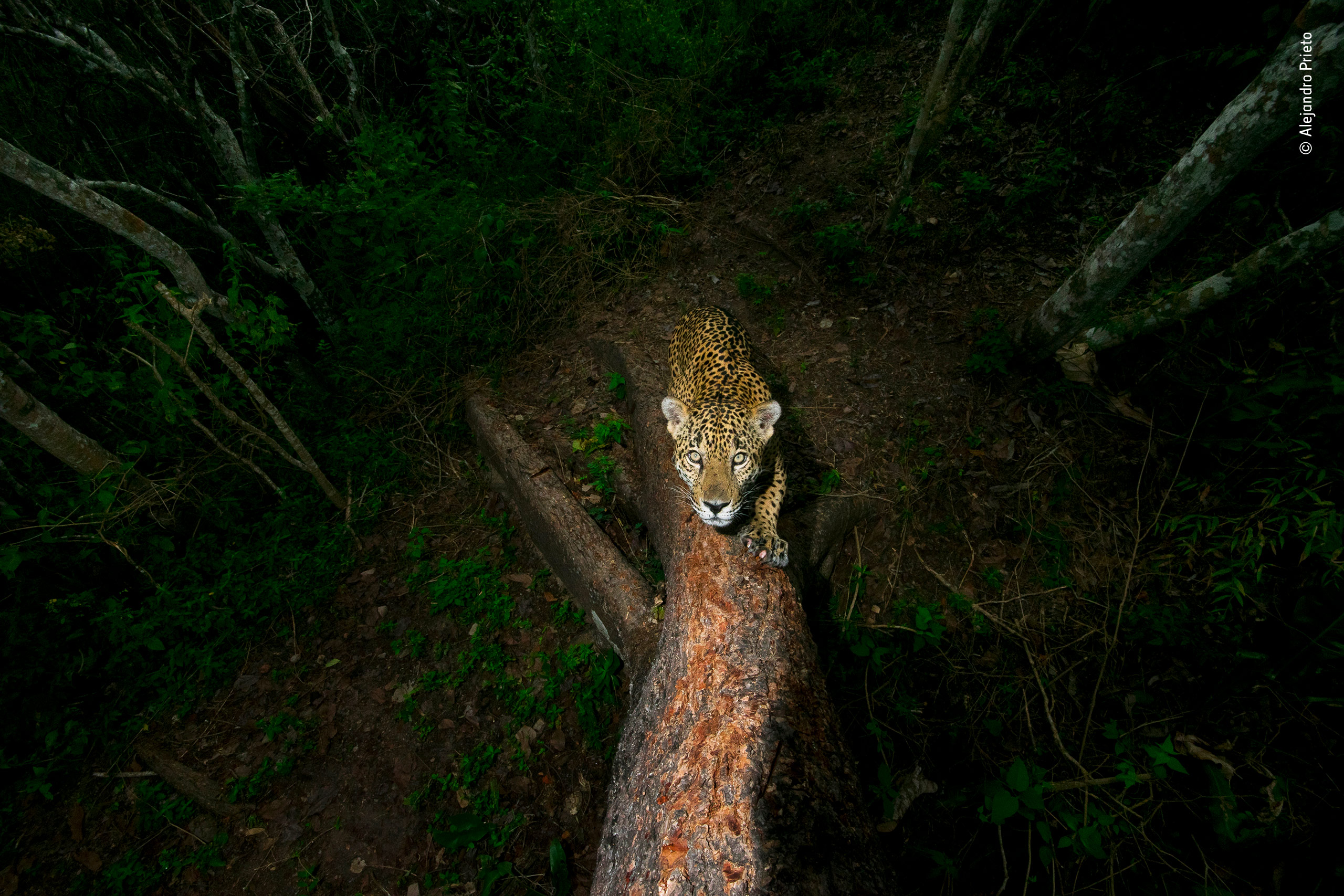
Winner 2018, Wildlife Photojournalist Award: Story
A male jaguar sharpens his claws and scratches his signature into a tree on the edge of his mountain territory in the Sierra de Vallejo in Mexico’s western state of Nayarit. The boundary-post has been chosen with care – the tree has soft bark, allowing for deep scratch marks that are a clear warning, backed by pungent scent, not to trespass. Jaguars need vast territories to have access to enough prey. But in Mexico, habitat is being lost at a rapid rate as forest is cleared for crops or livestock or for urban development, and much of what remains is fragmented. The loss of even a small area of habitat can cut a jaguar highway between one part of a territory and another and isolate the animal to such an extent that it cannot feed itself or find a mate.
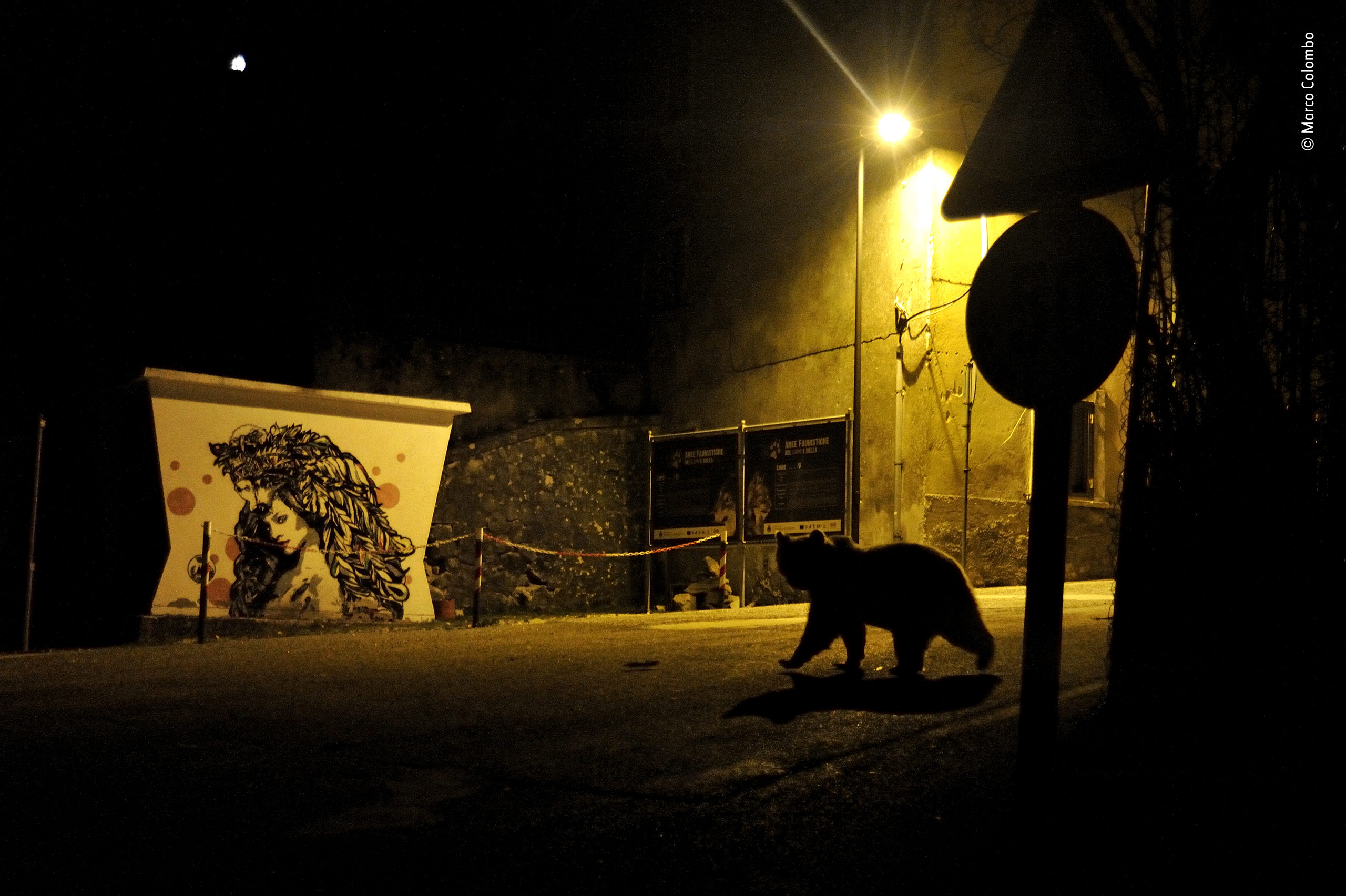
Winner 2018, Urban Wildlife
A shadowy movement caught Marco’s eye as he drove slowly through a village in the Abruzzo, Lazio and Molise National Park in Italy’s Apennine Mountains. Most Marsican brown bears – an isolated, unaggressive and critically endangered subspecies – stay well away from humans. A few individuals, though, venture into villages to raid vegetable gardens and orchards, especially in the run-up to winter hibernation, when they need to lay down fat. This puts them at risk of being hit by cars, of retaliatory poisoning and of harassment: video clips have appeared on social media made of bears being chased by cars. With just 50 or so bears remaining, every death is a disaster. Coexistence is possible, but only if a respectful distance is maintained
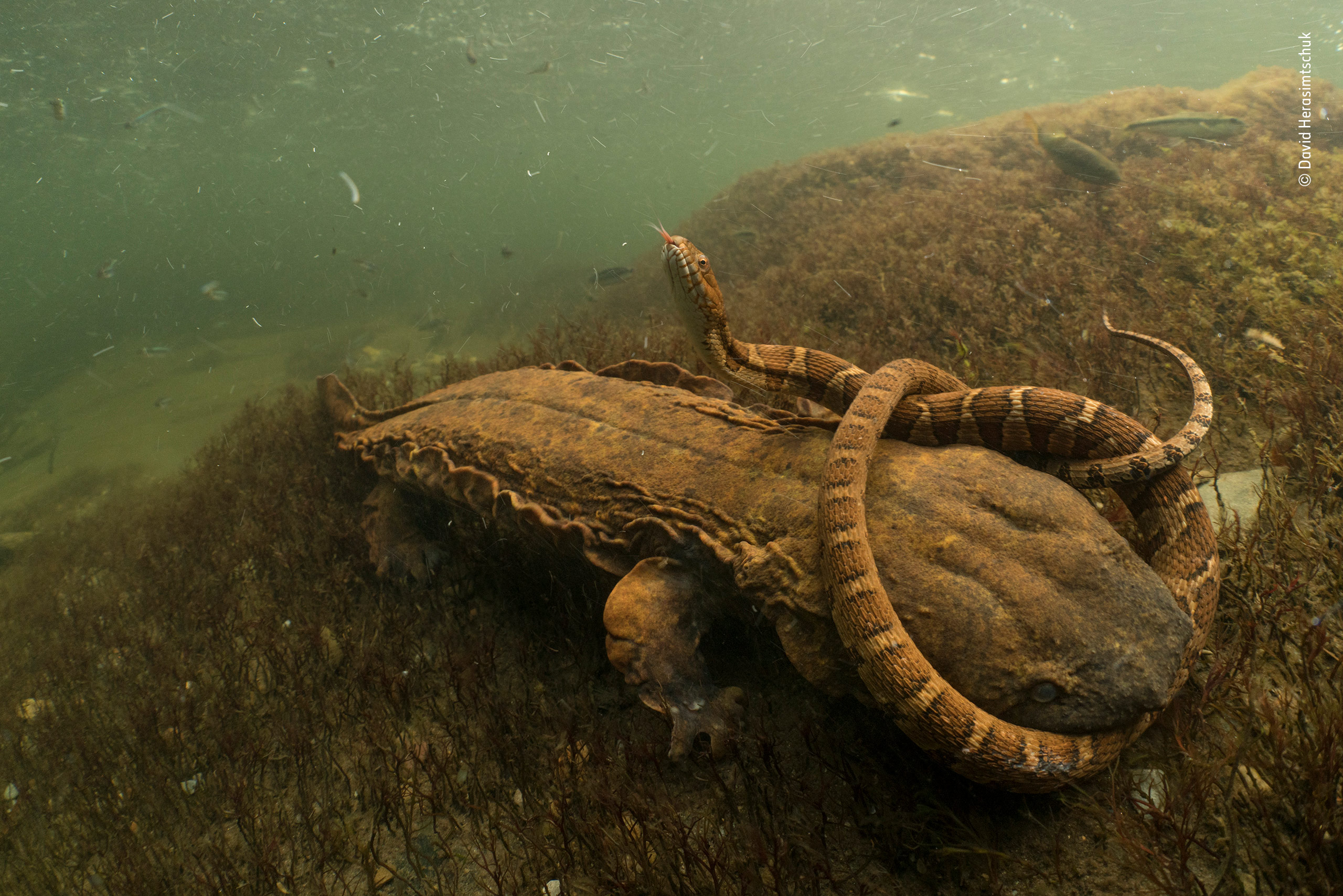
Winner 2018, Behaviour: Amphibians and Reptiles
It was not looking good for the northern water snake, clamped tightly in the jaws of a hungry hellbender in Tennessee’s Tellico River. North America’s largest aquatic salamander – up to 75 centimetres (29 inches) long – the hellbender has declined significantly because of habitat loss and degradation of the habitat that remains. Breathing primarily through its skin and seeking shelter and nest sites under loose rocks, it favours cool, flowing water in clear rocky creeks and rivers. Its presence indicates a healthy freshwater ecosystem
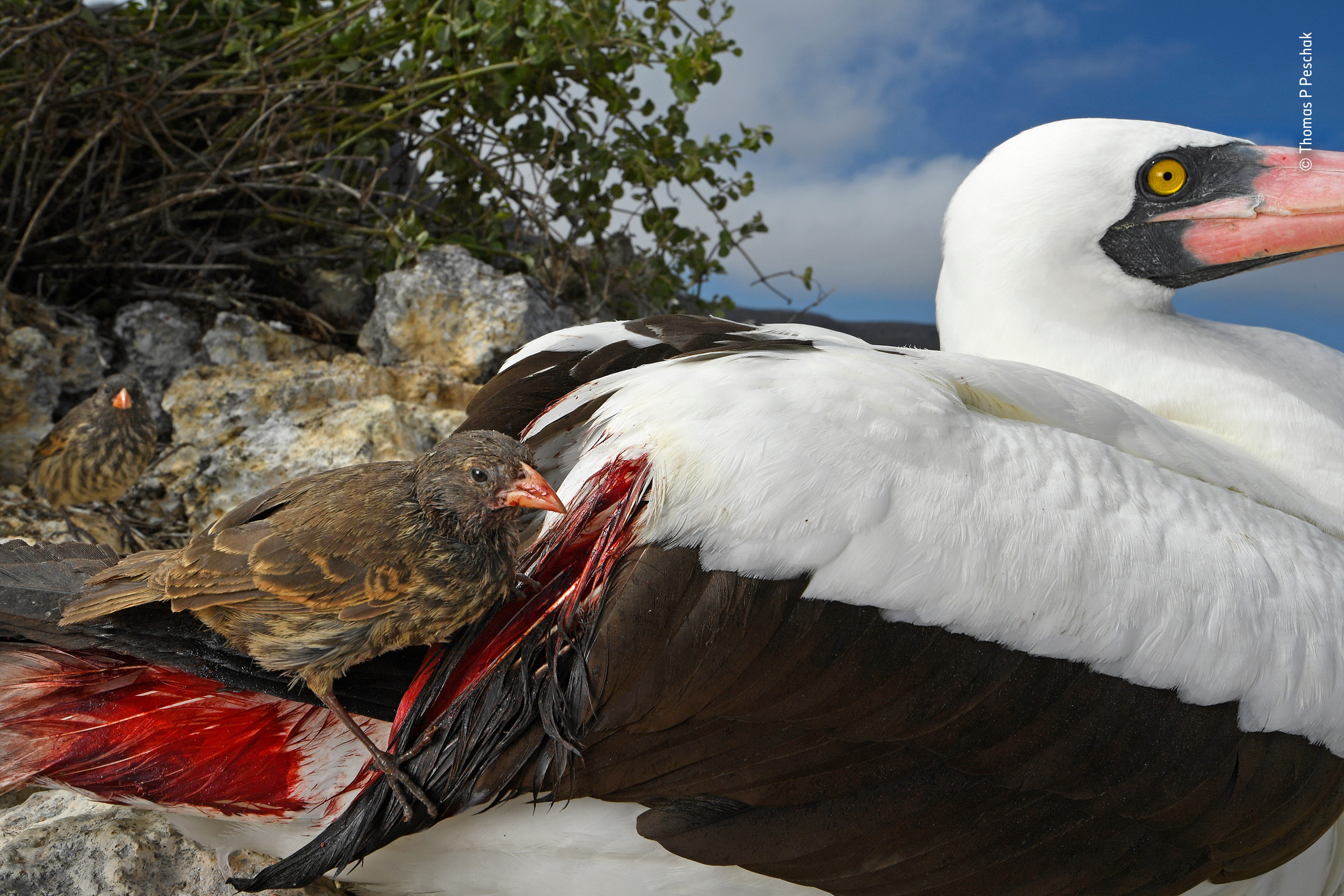
Winner 2018, Behaviour: Birds
When rations run short on Wolf Island, in the remote northern Galápagos, the sharp-beaked ground finches become vampires. Their sitting targets are Nazca boobies and other large birds on the plateau. Boobies thrive here, nesting among dense cactus thickets and fishing in the surrounding ocean, but the finches have a tougher time. The island has no permanent water and little rainfall. The finches – among the species that inspired Darwin’s theory of evolution – rely on a scant diet of seeds and insects, which regularly dries up. Pecking away at the base of booby flight feathers with their sharp beaks they drink blood to survive. Rather than leave and expose their eggs and chicks to the sun, the boobies appear to tolerate the vampires, and the blood loss doesn’t seem to cause permanent harm
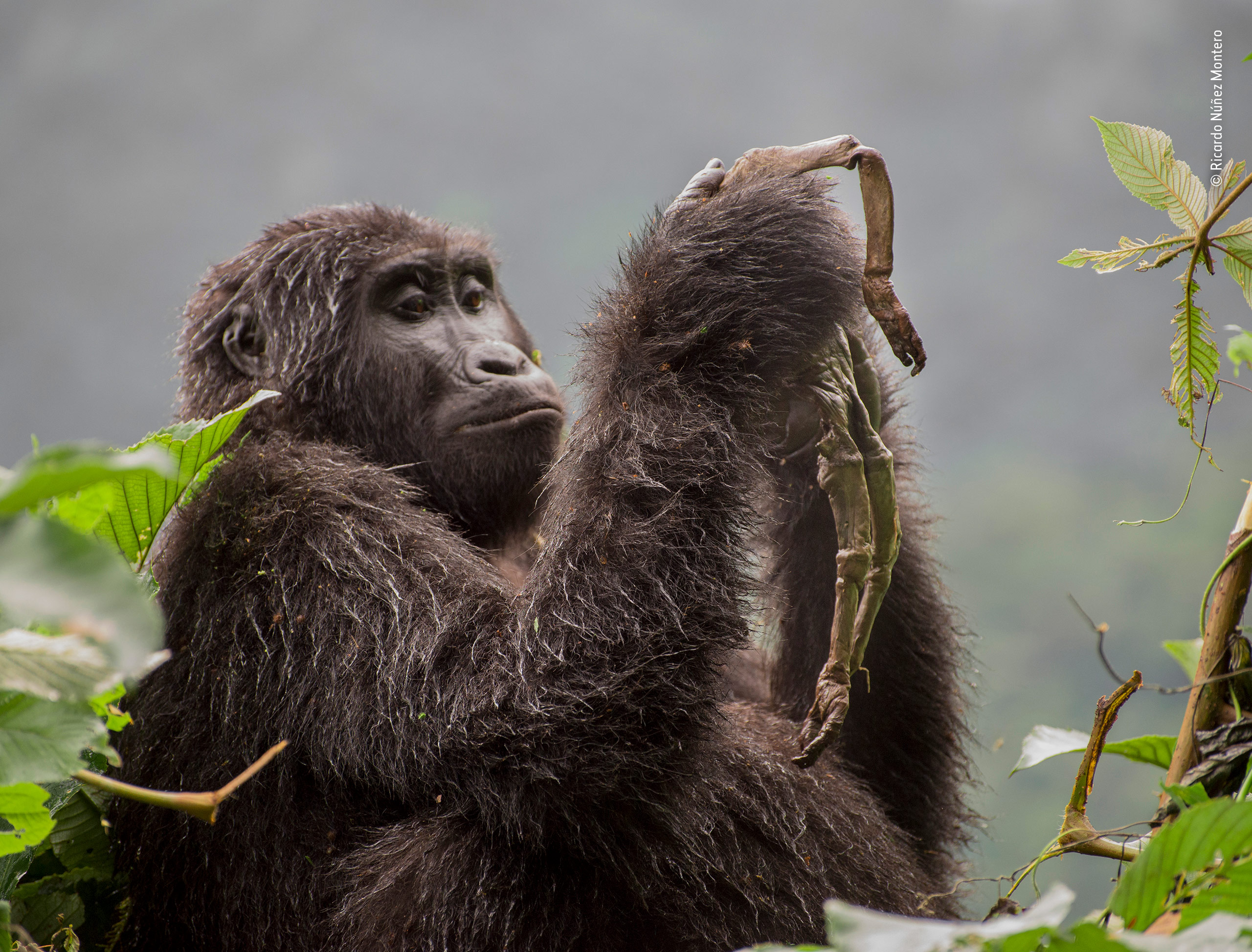
Winner 2018, Behaviour: Mammals
Kuhirwa, a young female member of the Nkuringo mountain gorilla family in Uganda’s Bwindi Impenetrable Forest, would not give up on her dead baby. What Ricardo first thought to be a bundle of roots turned out to be the tiny corpse. At first Kuhirwa had cuddled and groomed the body, moving its legs and arms up and down and carrying it piggyback like the other mothers. Weeks later, she started to eat what was left of the corpse, behaviour that the guide had only ever seen once before. From elephants stroking the bones of dead family members to dolphins who try to keep dead companions afloat, there is an abundance of credible evidence that many animals – ranging from primates and cetaceans to cats, dogs, rabbits, horses and some birds – behave in ways that visibly express grief, though individual reactions vary
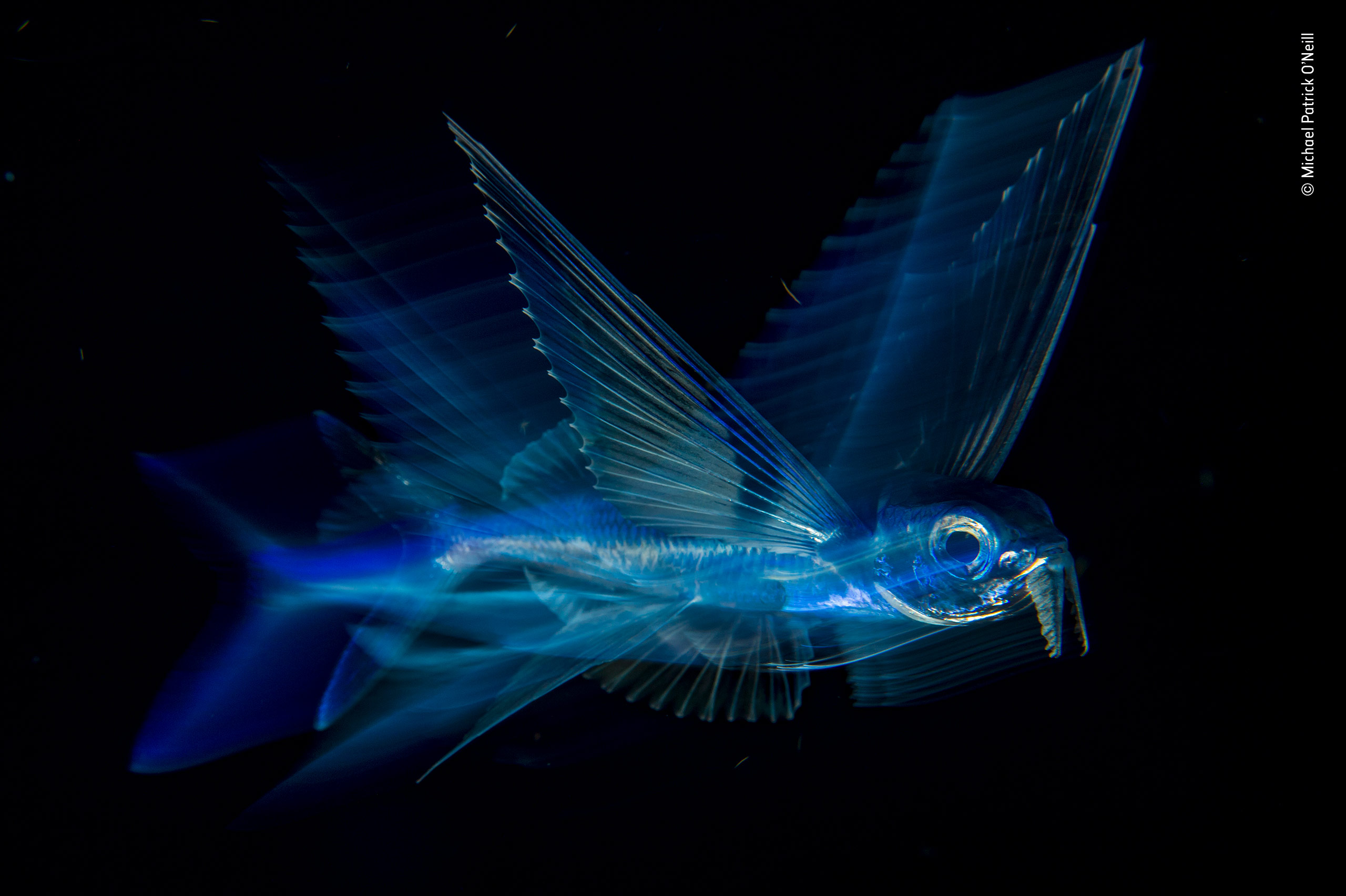
Winner 2018, Under Water
On a night dive over deep water – in the Atlantic, far off Florida’s Palm Beach – Michael achieved a long-held goal, to photograph a flying fish. By day, these fish are almost impossible to approach. Living at the surface, they are potential prey for a great many animals, including tuna, marlin and mackerel. But they have the ability to sprint away from danger, rapidly beating their unevenly forked tails (the lower lobe is longer than the upper one) to build enough speed to soar up and out of the water. Spreading their long, pointed pectoral fins like wings, flying fish can glide for several hundred metres
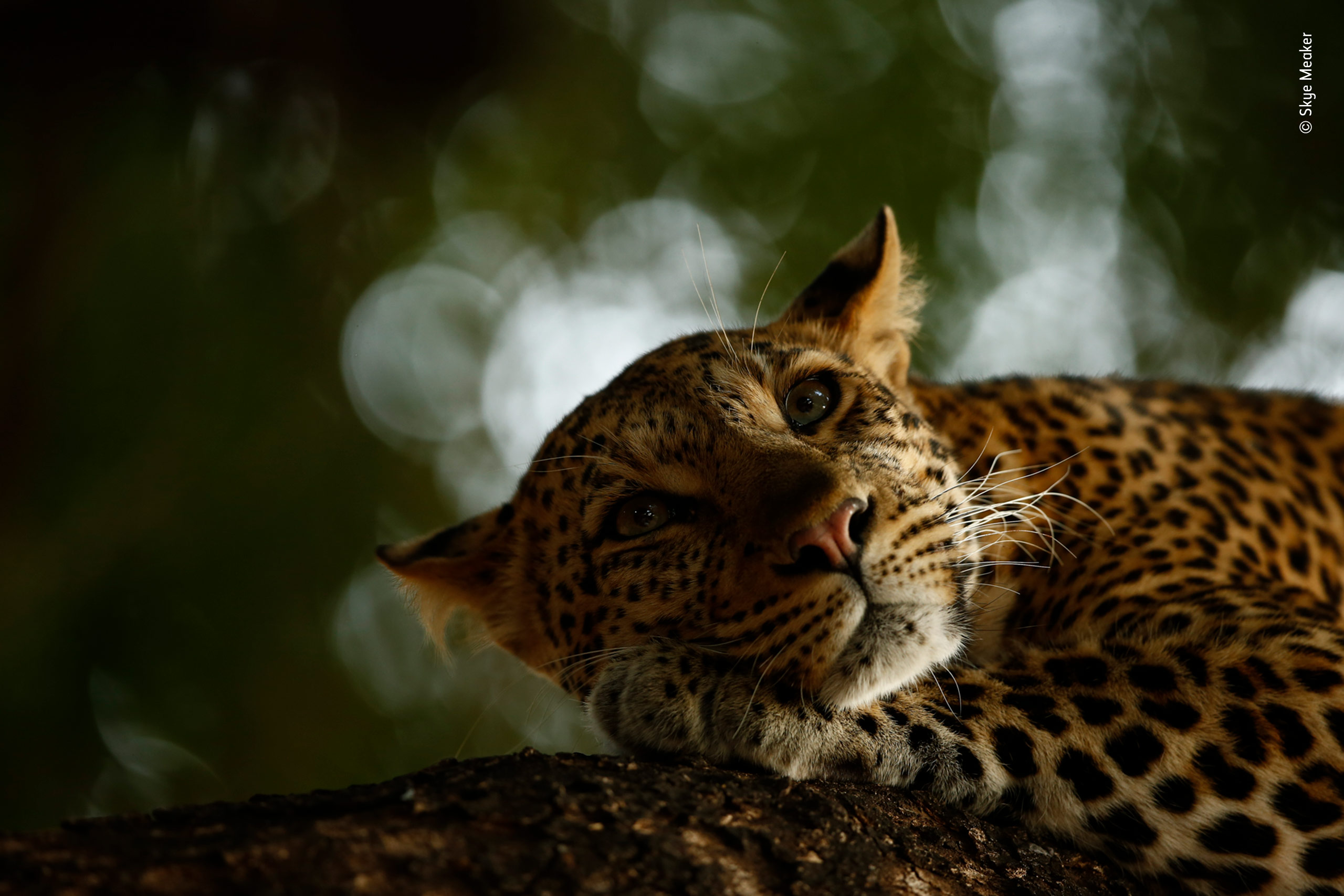
Grand Title Winner 2018, 15-17 Years Old
Mathoja was dozing when they finally found her, lying along a low branch of anyala tree. And she continued to doze all the time they were there, unfazed by the vehicle. “She would sleep for a couple of minutes. Then look around briefly. Then fall back to sleep,” says Skye. Mathoja’s home is Botswana’s Mashatu Game Reserve, which Skye and his family regularly visit, always hoping to see leopards, though they are notoriously elusive. In Bantu language, Mathoja means “the one that walks with a limp”. She limps because of an injury as a cub, but otherwise she is now a healthy eight-year-old
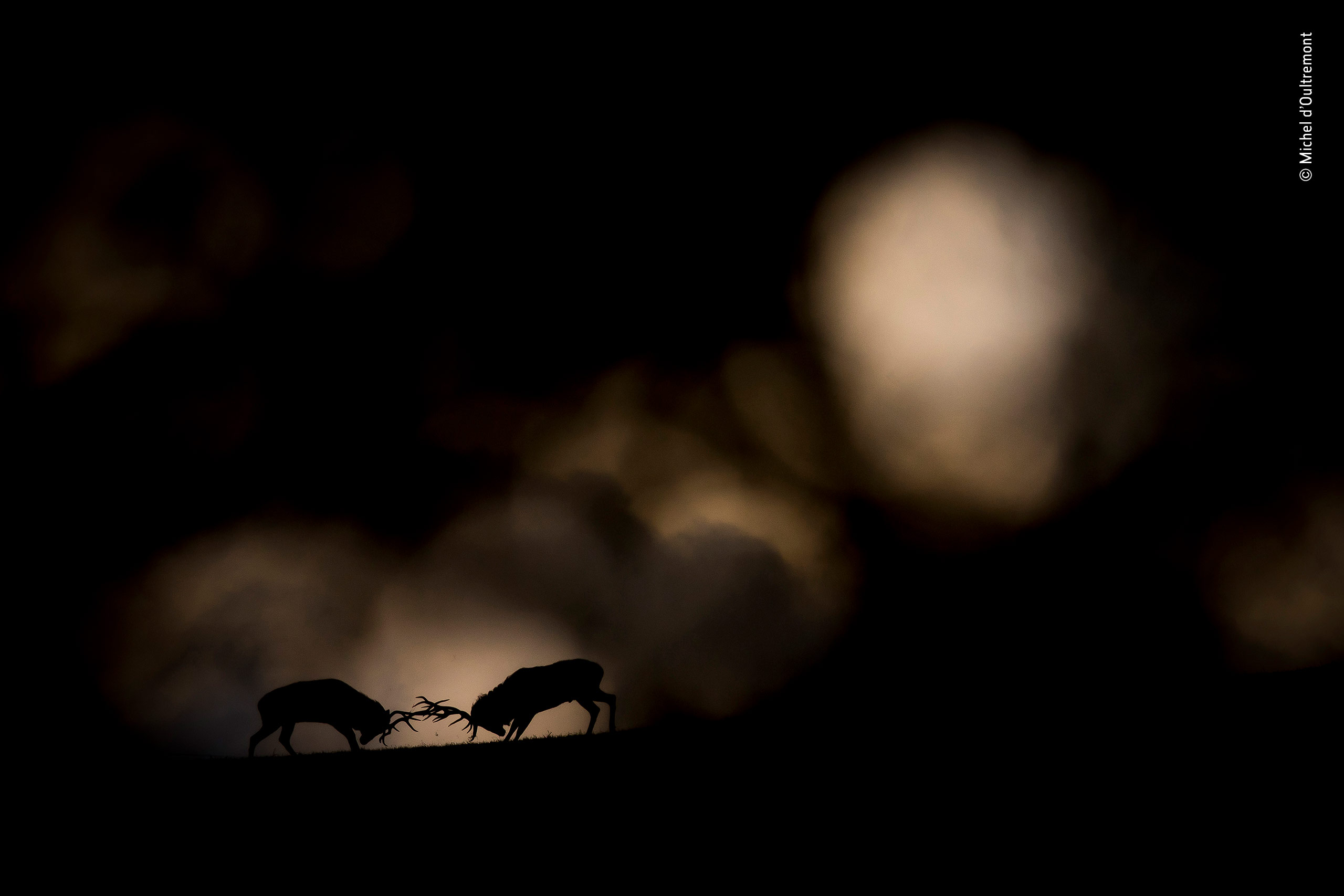
Winner 2018, Rising Star Portfolio Award
As storm clouds gathered over the Ardennes forest in Belgium, Michel hid behind a tree under a camouflage net. The thrilling sound of two red deer stags, roaring in competition over females, echoed through the trees, but infuriatingly the action was taking place further down the slope. Well matched, neither challenger was giving way, and the contest escalated into a noisy clash of antlers
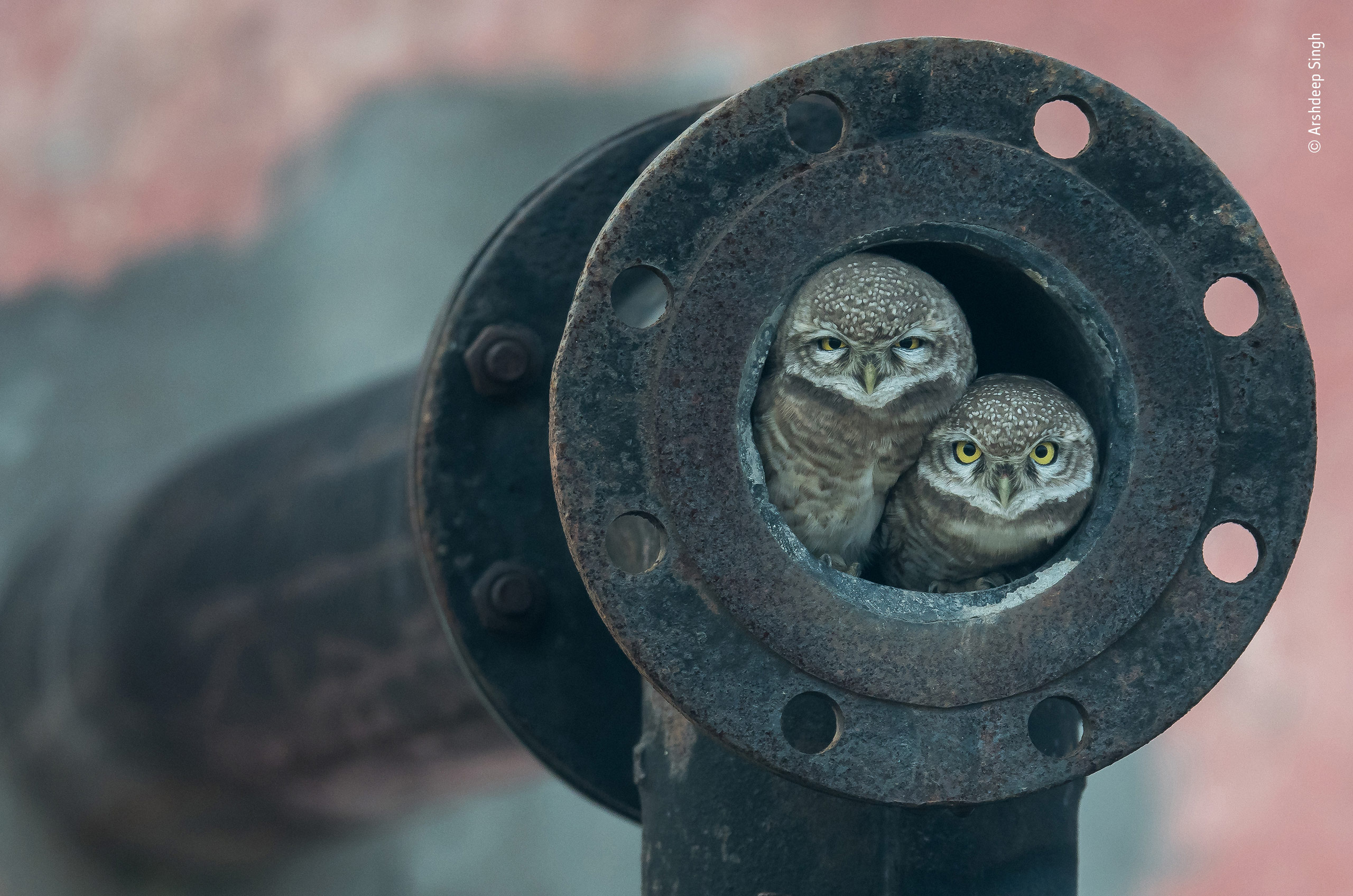
Winner 2018, 10 Years and Under
Huddled together at the opening of an old waste pipe, two spotted owlets look straight into Arshdeep’s lens. He and his father had been driving out of Kapurthala, a city in the Indian state of Punjab, going on a birding trip, when he saw one of them dive into the pipe. His father didn’t believe what he’d seen but stopped the car and backed up. It wasn’t long before one of the owlets – less than 20 centimetres high – popped its head out

